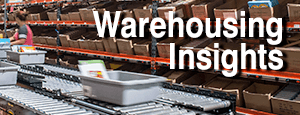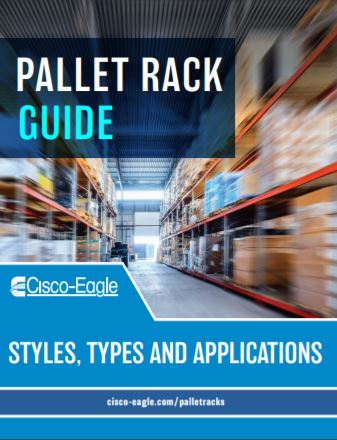More Pallet Rack Safety Tips
We work with clients constantly to create safe, stable and long-lasting rack layouts

Safety in warehouses tends to be greatly about the interactions between forklifts, pallet racks, people and stored products. This list of rack safety tips is part of our ongoing efforts to help warehouses operate safely and efficiently.
The majority of pallet rack structural failures result from just three sources
Those include (1) impacts from a lift truck collision; (2) Misuse and overloading (3) Lack of comprehension that racks can be dangerous, and the lack of a safety oriented mindset. Really, the focus is on #3 gets you to #1 and #2. Operations with a safety mindset will also understand that impacts are deadly, and they know how to safely load their racks.
Check out “When Racks Collide” for more information on protecting your racks.
Know how your rack will be used when you spec it.
“The two main rack safety points are the proper initial design of the structure so it doesn’t collapse, and proper training of personnel to ensure a clear understanding of the structure’s operational characteristics,” said Rack Manufacturer’s Institute (RMI) President John Nosfinger in a 2008 Modern Materials Handling article. If you inherited the pallet rack in your operation from someone else, find out the details of the rack system and its design. File that so that anyone can access it, and enforce your capacity ratings so that your racks will not be overloaded or mis-loaded.
The corners and ends of the rack aisles are most susceptible to a direct lift truck hit – so defend them
Utilize steel guardrails, (placed 1′ to 3′ in front of the rack), post protectors and other means to shield them from lift truck accidents.
Rack accidents are also caused by improper installation & maintenance
If your uprights are not properly bolted to the floor, or have loosened over the years, rack accidents can occur. Check them regularly to be sure. Boltless beams should always be secured to the rack. Check the rivets after installation to be sure they fit snugly and that safety clips are utilized. Monitor them over time to be sure they haven’t been knocked out of place.
Place the load squarely
Drivers should be trained to deposit pallets correctly on the rack beams. They should be square, and if possible should overlap uniformly on front and back.This helps you maintain evenly-distributed loads, which are vital to maximizing rack capacity and saving wear on your beams. Also, pallets out of square can cause accidents in 2-deep rows when the other side is being loaded. Placing the load only onto wire decks, where the pallet isn’t supported by rack beams, can greatly reduce capacity.
Don’t exceed listed capacity
Enforcement is a matter of documentation, product distribution and training. Train your warehousemen to understand what the capacities of your racks are, and what each load might weigh. Post capacities on the racks so anyone using them can understand at a glance how much weight the beams can take. Beam capacity is much easier to understand than upright capacity.
Basically, if you have heavy, tall loads that result in spaces more than 48″ between beam levels, you should call a professional to certify that your rack can take the load. The rule of thumb is that the greater the vertical space between beam shelves, the lower the upright capacity.
Guard your rack bays with netting or wire guards
These safeguards are relatively inexpensive solutions, and can be invaluable in particular in areas where there is foot traffic, order picking, or other human activities in the aisles below. See pallet rack safety netting or wire rack guards for more information.
Replace or repair damaged racks
This is another no-brainer, but I’ve been in warehouses too many times and cringed at the shape of some of the battered and beaten uprights you see. Yes, it is a pain to unload racks, take them down and put in new uprights or beams. And the hardware is not free. But I sure wouldn’t want to be the lift truck driver trying to load some of those racks, or an order picker working in the lower bays. If something is damaged, and it’s carrying thousands of pounds of inventory, it can trigger collapse in entire rows, endangering people and costing much more than simple replacement.
Know your seismic zone situation
In areas where racks should be modified for seismic issues, it’s vital to understand what local, state or federal seismic regulations you must adhere to. This tends to involve larger footplates and installation methods, but may not necessarily be limited to that.
Download our Pallet Rack Guide
Pallet rack enhances your warehouse and improves overall facility performance when correctly specified, laid out and installed for the right load in the right positions. Check out our guide to specifications, styles, accessories and applications with expert tips from our employee-owners.
You’ll find quick, useful information on racks and how you can use them more effectively.
Download the guide today
Tags: Material Handling, Pallet Rack, warehouse safety, storage, industrial accident prevention
Scott Stone is Cisco-Eagle's Vice President of Marketing with 35 years of experience in material handling, warehousing and industrial operations. His work is published in multiple industry journals an websites on a variety of warehousing topics. He writes about automation, warehousing, safety, manufacturing and other areas of concern for industrial operations and those who operate them.




